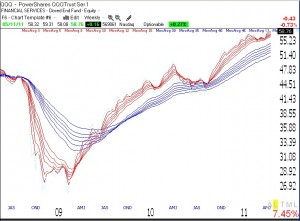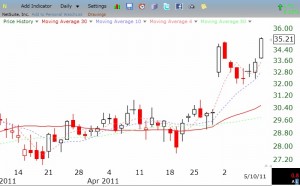The GMI and GMI2 each returned to 5 of 6. However, the QQQ (as well as the DIA and SPY) remains in a sustained RWB up-trend, as shown in the weekly chart below. Click on chart to enlarge.
 Dr. Wish
Dr. Wish
All of my market indicators are positive; Judy loves “N”
Even as IBD continues to label this a “market in correction,” my indicators remain fully positive. Tuesday was the 29th day of the current QQQ short term up-trend. By the way, one of the concept stocks Judy loves, N, has just taken off. It may be a little extended now. I will watch it for a possible entry on a retracement. Click on chart to enlarge.
QQQ short term up-trend intact
Monday was the 28th day of the QQQ short term up-trend.

